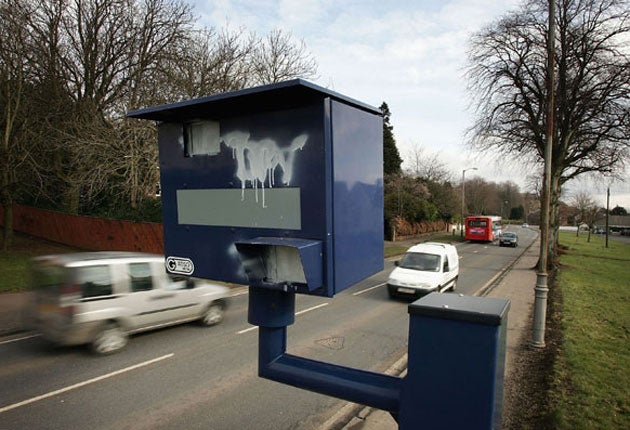Is the speed camera near you a cash cow or a lifesaver?
Minister admits that plans to release data on every speed trap could lead to vandalism

Details of the accidents prevented – and the fines raised – by every speed camera in England are to be made public for the first time, allowing drivers to distinguish the cash generators from the life savers.
Ministers fear the move could lead to a wave of vandalism targeting the motorist's nemesis, but hope it will also demonstrate where precisely cameras have reduced the rate of crashes and injuries.
From next month, drivers will be able to access Transport Department figures online back to 1990 and see exactly what impact speed cameras have had on every road in England. They will include annual collision and casualty data showing the numbers of people killed and seriously injured.
The roads minister, Mike Penning, said: "This will expose where cameras are and are not doing their job. It is all about empowerment. We can only do what we do with road safety if people believe it isn't just about raising money but is about saving lives."
He admitted that, before 2004, many local authorities installed speed cameras regardless of how many accidents took place in order to control traffic. In many cases it meant raising money from drivers on roads where safety was not being compromised.
"What this will show is where there weren't any accidents before, and accidents afterwards are minimal, or may even have gone up because people have reacted differently. But it will also expose where accidents have dropped."
Police and local authorities resisted the release of the data, he admitted. "The police are concerned that certain cameras may be vandalised more than they are now, but that's not a reason not to do it."
Councils in England have been told to release casualty and accident numbers for every camera site, before and after its installation. Police forces will also publish information on the amount each site raises in fines and other punishments meted out to speeding drivers.
The publication of the data, due to be announced tomorrow, is the latest example of the coalition's attempt to increase government transparency. Other moves include forcing public bodies to release details of spending, salaries of top officials and travel costs.
Data released last year by Thames Valley Safer Roads Partnership showed several cameras caught more than 100 drivers a day.
Join our commenting forum
Join thought-provoking conversations, follow other Independent readers and see their replies
Comments